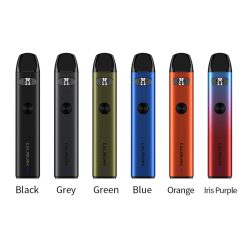Vaping, once a niche activity, has rapidly ascended to the forefront of global health and cultural discussions. With its technological advances, claimed health benefits, and a marked cultural imprint, it has garnered both acclaim and scrutiny.
This article delves deep into the world of vaping, exploring its origins, the science behind it, its health implications, regulations, and its broader societal impact. Join us on this comprehensive journey to understand the multifaceted world of vaping, encouraging informed choices amidst the swirling clouds of debate.
1. Brief Overview Of Vaping
Vaping is the act of inhaling and exhaling vapour produced by an electronic cigarette or similar device. The device uses heat to turn a liquid, known as e-liquid, into vapour. This e-liquid can contain various ingredients, including nicotine. Unlike traditional cigarettes, these devices do not produce tar, making them a subject of numerous vaping studies.
In a world where health is paramount, making informed decisions is key. Whether one is a user, a concerned parent, or a bystander, understanding the ins and outs of vaping is critical. This knowledge can influence personal choices, shape societal opinions, and guide legislative decisions.
History Of Vaping
The origins of vaping trace back to ancient times, when various cultures employed primitive methods to inhale vapours. Modern vaping, as we recognise it, began its evolution in the mid-20th century, with the most significant advancement occurring in the early 2000s. The innovative idea behind it was to provide an alternative to traditional smoking.
Vaping’s origins date back to Ancient Egypt, where people used hot stones to vape herbs. The modern e-cigarette we recognise was conceptualised in the 20th century, with Hon Lik, a Chinese pharmacist, making the first electronic cigarette in the early 2000s.
Initial vaping devices were clunky and not widely available. However, technological advancements and marketing strategies over the past two decades have transformed vaping into a global trend, prompting rigorous vaping studies worldwide.
2. The Science Behind Vaping
Vaping stands apart from traditional smoking due to its distinct methodology. Instead of burning tobacco and inhaling smoke, users inhale a vapour derived from heated e-liquid. The process of vaporisation occurs in the device, relying heavily on technological and chemical principles.
How Vape Devices Operate
Vaping devices, or e-cigarettes, work by heating a liquid solution to produce vapour. They utilise a battery-powered heating element, often a coil, to achieve this. When the user inhales, the device activates, and the e-liquid in contact with the coil vaporises. This vapour is then inhaled, mimicking the sensation of smoking.
Components Of A Vape
Central to any vaping device are its key components. These typically include a battery to provide power, a coil or heating element to heat the e-liquid, a tank or reservoir to store the e-liquid, and a mouthpiece through which users inhale. These components work in tandem to deliver an optimal vaping experience.
The Process Of Vaporisation
E-liquids heat up to their boiling point, turning into vapour, which is then inhaled. This differs from smoking, which involves combustion. The absence of this combustion is often central in the vaping vs. smoking debate.
-
Uwell Caliburn G2 kit
R520.00 -
Uwell Caliburn A2 Kit
R250.00 -
Smok Novo 4 Kit
R360.00
E-Liquids: Composition And Varieties
E-liquids are the lifeline of the vaping process. Their primary ingredients include propylene glycol (PG), vegetable glycerin (VG), flavourings, and often nicotine. Each ingredient plays a distinct role, with PG and VG acting as carriers for flavour and nicotine, ensuring that vapers get a consistent experience.
Propylene Glycol And Vegetable Glycerin
These are the primary base ingredients in e-liquids. Propylene glycol provides the throat hit, while vegetable glycerin contributes to the vapour’s thickness. Both have undergone extensive vaping studies to ensure their safety.
Flavours And Nicotine Levels
A hallmark of vaping is its wide array of flavour options. From traditional tobacco tastes to exotic fruit blends, there’s a flavour to suit every palate. Alongside flavour choices, e-liquids come in various nicotine strengths, catering to both heavy smokers seeking a switch and those looking to reduce their nicotine intake.
-
Brutal CBD – Litchi Strawberry
R295.00 – R590.00 -
VGOD Saltnic Cubano
R220.00 -
Brutal CBD – Pineapple Passion
R295.00 – R590.00 -
VGOD Saltnic Mighty Mint
R220.00
3. Health Implications Of Vaping
While vaping emerged as a purported safer alternative to smoking, it’s not without its health concerns. It’s essential to understand these implications, especially when choosing to vape. While many believe it’s less harmful than traditional cigarettes, ongoing research seeks to validate or challenge this perspective.
Comparing Traditional Cigarettes And Vapes
At the core of the smoking vs vaping debate lies a comparison of their health effects. Traditional cigarettes involve combusting tobacco, leading to the production of tar and numerous harmful chemicals. In contrast, vaping doesn’t involve combustion; however, concerns arise from the ingredients within e-liquids and their effects when vaporised.
Chemical Composition Differences
When one lights a cigarette, it releases over 7 000 chemicals, many of which are harmful and known carcinogens. Vaping, however, avoids combustion, leading to a significantly reduced chemical profile. But, it’s crucial to note that e-liquids can still contain potentially harmful substances, albeit in lower quantities than cigarettes.
Health Risks: Tobacco Vs. Vape
While traditional cigarettes have established risks, including lung cancer and heart disease, vaping’s long-term effects are still under research. Preliminary findings suggest vaping could pose fewer health risks than smoking, but it’s not risk-free. Potential issues like respiratory problems linked to certain e-liquid ingredients have emerged.
The Debate On Vaping And Lung Health
Recent years have seen increasing scrutiny on vaping’s impact on lung health. Concerns arose from reports of vape-related lung illnesses, sparking global attention. It’s critical to discern between potential risks associated with regular vaping and those linked to adulterated or black-market products.
Reported Cases Of Illness
There have been instances, particularly in the US, of lung injuries associated with vaping. Many of these cases were traced back to black-market THC cartridges containing harmful additives. However, these instances provide a stark reminder of the importance of safe vaping practices.
Findings Of Major Health Organisations
Prominent health organisations, such as the World Health Organisation (WHO) and the Centres for Disease Control and Prevention (CDC), have released statements and findings on vaping. While acknowledging potential reduced risks compared to smoking, they emphasise the need for further research, especially regarding long-term use.
4. Regulations And Legal Aspects
In South Africa, as is the case globally, the regulation of vaping products is crucial, particularly given the associated health implications. Such laws serve to guarantee the safety of the products, restrict access to the youth, and set out clear guidelines for both manufacturers and sellers, thereby fostering an industry that operates responsibly and ethically.
Vaping Laws
The vaping industry in South Africa is underpinned by a set of evolving regulations. These rules cover diverse aspects of vaping, ranging from the quality of products to the manner in which they are promoted. Ensuring compliance is essential to make sure that the products available to the public meet both safety and quality criteria.
Age Restrictions And Sale
In South Africa, similar to other jurisdictions, there’s a prohibition on selling vape products to those under 18. This stipulation is in place to safeguard the youth from the potential adverse health outcomes tied to nicotine use. To uphold this regulation, vendors are required to incorporate age verification systems during sales.
Advertising And Promotion Restrictions
Given the importance of public health and the potential influence on younger populations, South Africa enforces particular advertising limitations concerning vaping products. These rules are designed to counteract the undue glamorisation of vaping and to ensure that promotional materials provide a balanced view without misleading the public about potential health advantages or dangers.
5. Social And Cultural Impact Of Vaping
Beyond health and regulation, vaping has undeniably carved its niche in modern culture. From dedicated cafés to its influence on entertainment, vaping’s cultural footprint is both intriguing and significant.
The Rise Of Vape Culture
Vaping has birthed a subculture, complete with its lexicon, customs, and events. The communal aspect of vaping, particularly in dedicated lounges or cafés, has helped foster this culture, creating a shared experience among enthusiasts.
Influence On Music, Film, And Art
Vaping’s cultural impact extends to various entertainment sectors. Musicians, filmmakers, and artists occasionally incorporate vaping themes or imagery in their work, reflecting its contemporary relevance and sometimes sparking discussions on its societal implications.
Vaping And The Youth
While vaping was primarily introduced as an alternative for adult smokers, its appeal among younger populations has garnered significant attention. This phenomenon raises concerns about youth nicotine addiction and the potential for vaping to act as a gateway to smoking.
The Appeal To Younger Generations
Sleek device designs, a plethora of flavours, and perceived ‘coolness’ have contributed to vaping’s allure among teens and young adults. The ease of concealment, especially with newer, more compact devices, also plays a role in its popularity among this demographic.
Efforts To Curb Youth Vaping
Governments and health organisations have taken measures to curb youth vaping, recognising its potential adverse effects. Strategies range from public awareness campaigns targeting young people to stricter regulations on flavours and product designs that may appeal to this age group.
Vaping, having surged in popularity over recent years, remains a topic of fervent discussion, characterised by its multifaceted implications on health, society, and culture. From its historical origins to its impact on youth and its place in modern culture, understanding vaping requires a comprehensive exploration.
While research continues to elucidate the long-term health effects, what remains evident is the need for informed choices and responsible regulation. As consumers, it is vital to stay updated, ensure safe vaping practices, and make decisions based on credible evidence. As the landscape of vaping continues to evolve, so too should our understanding, ensuring that the conversation remains rooted in fact, empathy, and the broader goal of public health.
The post Decoding Vaping: Top 5 Essential Facts Everyone Should Know appeared first on Vaperite.















